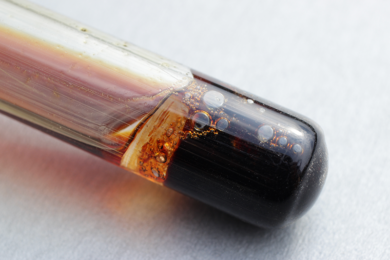Middle Island Resources Ltd has received positive results from preliminary ore sorting test work conducted on drill core from the Two Mile Hill tonalite deeps deposit at its 100% owned Sandstone gold project in Western Australia. Positive ore sorting test work campaign has demonstrated Two Mile Hill Tonalite Deeps deposit is amenable to pre-concentration sorting, with a high selectivity of gold mineralisation using X-ray and optical sensors.
- Scoping level test work indicates that sorting can deliver a 185%-257% increase in grade with gold recoveries in excess of 93%
- Up to 64% of the sorter feed material may be rejected delivering significant benefits, including reduced haulage and process operating costs, and tailings disposal and water requirements
- POW lodged to provide PQ diameter diamond core for more definitive test work on larger composite samples
- Multistage XRT/colour/laser sorting being scheduled to qualify the positive results received from initial test work
- Validation would likely lead to a significant positive impact on project economics
- Two Mile Hill tonalite deeps deposit is located 4 km north of the company’s 600,000t/y Sandstone gold processing plant and comprises an Exploration Target of 24 Mt to 34 Mt at 1.1g/t to 1.4g/t Au
- The indicative ore sorting results will be incorporated into an underground mining concept study to be prepared during the March quarter.
An ore sorting study was initiated following encouraging mineralogical assessment on ore sourced from the Two Mile Hill deeps deposi. The aims of the test work were to determine if a mill feed upgrade was achievable and the optimum processing route to do so.
Continuous intervals of quarter NQ2 core from four selected holes were compiled by Middle Island for sorting trials completed by Tomra (Sydney) and Steinert (Perth). The selection process for test work intervals did not apply an upper cut-off grade, with the drilled composite grade averaging 3.44g/t Au based on 50 g fire assay analyses.
The drill core was combined and then lightly jaw crushed (-30mm/+10mm) to produce a suitable feed size for sorting. The -10mm material (fines) is deemed mill feed.
Screening, sampling and assaying on the Tomra sorting products was undertaken by Australian Laboratory Services (ALS) in Perth. Sample splits for the Tomra gold assays were undertaken on +10mm products, as the material was subsequently re-combined for the following Steinert sorting trials. Sampling and assays on the Steinert sorting products were undertaken by the Nagrom metallurgical laboratory in Perth. The Steinert products were crushed to -2mm before 1kg sub-samples were split for gold analysis.
With one exception, all product and reject gold analyses involved 1 kg bottle rolls with AAS readings and residue assays.










